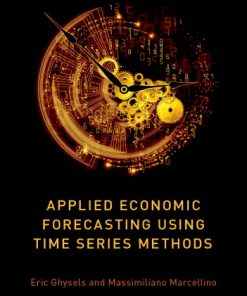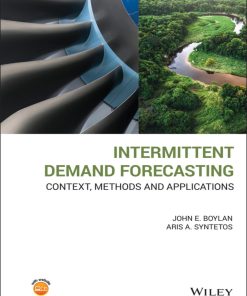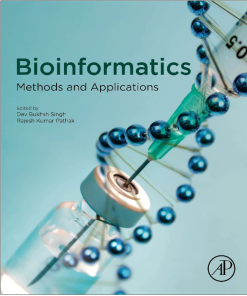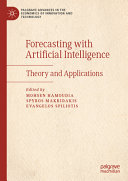(Ebook PDF) Intermittent Demand Forecasting: Context, Methods and Applications 1st Edition by Aris Syntetos, John Boylan isbn 9781119135302 1119135303 full chapters
$50.00 Original price was: $50.00.$25.00Current price is: $25.00.
(Ebook PDF) Intermittent Demand Forecasting: Context, Methods and Applications 1st Edition by Aris Syntetos, John Boylan -Ebook PDF Instant Download/Delivery:9781119135302, 1119135303
Instant download Full Chapter of Intermittent Demand Forecasting: Context, Methods and Applications 1st Edition after payment

Product details:
ISBN 10:1119135303
ISBN 13:9781119135302
Author: John E. Boylan; Aris A. Syntetos
Table of Contents:
- 1 Economic and Environmental Context
- 1.1 Introduction
- 1.2 Economic and Environmental Benefits
- 1.3 Intermittent Demand Forecasting Software
- 1.4 About this Book
- 1.5 Chapter Summary
- Technical Note
- 2 Inventory Management and Forecasting
- 2.1 Introduction
- 2.2 Scheduling and Forecasting
- 2.3 Should an Item Be Stocked at All?
- 2.4 Inventory Control Requirements
- 2.5 Overview of Stock Rules
- 2.6 Chapter Summary
- Technical Notes
- 3 Service Level Measures
- 3.1 Introduction
- 3.2 Judgemental Ordering
- 3.3 Aggregate Financial and Service Targets
- 3.4 Service Measures at SKU Level
- 3.5 Calculating Cycle Service Levels
- 3.6 Calculating Fill Rates
- 3.7 Setting Service Level Targets
- 3.8 Chapter Summary
- Technical Note
- 4 Demand Distributions
- 4.1 Introduction
- 4.2 Estimation of Demand Distributions
- 4.3 Criteria for Demand Distributions
- 4.4 Poisson Distribution
- 4.5 Poisson Demand Distribution
- 4.6 Incidence and Occurrence
- 4.7 Poisson Demand Incidence Distribution
- 4.8 Bernoulli Demand Occurrence Distribution
- 4.9 Chapter Summary
- Technical Notes
- 5 Compound Demand Distributions
- 5.1 Introduction
- 5.2 Compound Poisson Distributions
- 5.3 Stuttering Poisson Distribution
- 5.4 Negative Binomial Distribution
- 5.5 Compound Bernoulli Distributions
- 5.6 Compound Erlang Distributions
- 5.7 Differing Time Units
- 5.8 Chapter Summary
- Technical Notes
- 6 Forecasting Mean Demand
- 6.1 Introduction
- 6.2 Demand Assumptions
- 6.3 Single Exponential Smoothing (SES)
- 6.4 Croston’s Critique of SES
- 6.5 Croston’s Method
- 6.6 Critique of Croston’s Method
- 6.7 Syntetos–Boylan Approximation
- 6.8 Aggregation for Intermittent Demand
- 6.9 Empirical Studies
- 6.10 Chapter Summary
- Technical Notes
- 7 Forecasting the Variance of Demand and Forecast Error
- 7.1 Introduction
- 7.2 Mean Known, Variance Unknown
- 7.3 Mean Unknown, Variance Unknown
- 7.4 Lead Time Variability
- 7.5 Chapter Summary
- Technical Notes
- 8 Inventory Settings
- 8.1 Introduction
- 8.2 Normal Demand
- 8.3 Poisson Demand
- 8.4 Compound Poisson Demand
- 8.5 Variable Lead Times
- 8.6 Chapter Summary
- Technical Notes
- 9 Accuracy and Its Implications
- 9.1 Introduction
- 9.2 Forecast Evaluation
- 9.3 Error Measures in Common Usage
- 9.4 Criteria for Error Measures
- 9.5 Mean Absolute Percentage Error and its Variants
- 9.6 Measures Based on the Mean Absolute Error
- 9.7 Measures Based on the Mean Error
- 9.8 Measures Based on the Mean Square Error
- 9.9 Accuracy of Predictive Distributions
- 9.10 Accuracy Implication Measures
- 9.11 Chapter Summary
- Technical Notes
- 10 Judgement, Bias, and Mean Square Error
- 10.1 Introduction
- 10.2 Judgemental Forecasting
- 10.3 Forecast Bias
- 10.4 The Components of Mean Square Error
- 10.5 Chapter Summary
- Technical Notes
- 11 Classification Methods
- 11.1 Introduction
- 11.2 Classification Schemes
- 11.3 ABC Classification
- 11.4 Extensions to the ABC Classification
- 11.5 Conceptual Clarifications
- 11.6 Classification Based on Demand Sources
- 11.7 Forecasting‐based Classifications
- 11.8 Chapter Summary
- Technical Notes
- 12 Maintenance and Obsolescence
- 12.1 Introduction
- 12.2 Maintenance Contexts
- 12.3 Causal Forecasting
- 12.4 Time Series Methods
- 12.5 Forecasting in Context
- 12.6 Chapter Summary
- Technical Notes
- 13 Non‐parametric Methods
- 13.1 Introduction
- 13.2 Empirical Distribution Functions
- 13.3 Non‐overlapping and Overlapping Blocks
- 13.4 Comparison of Approaches
- 13.5 Resampling Methods
- 13.6 Limitations of Simple Bootstrapping
- 13.7 Extensions to Simple Bootstrapping
- 13.8 Chapter Summary
- Technical Notes
- 14 Model‐based Methods
- 14.1 Introduction
- 14.2 Models and Methods
- 14.3 Integer Autoregressive Moving Average (INARMA) Models
- 14.4 INARMA Parameter Estimation
- 14.5 Identification of INARMA Models
- 14.6 Forecasting Using INARMA Models
- 14.7 Predicting the Whole Demand Distribution
- 14.8 State Space Models for Intermittence
- 14.9 Chapter Summary
- Technical Notes
- 15 Software for Intermittent Demand
- 15.1 Introduction
- 15.2 Taxonomy of Software
- 15.3 Framework for Software Evaluation
- 15.4 Software Features and Their Availability
- 15.5 Training
- 15.6 Forecast Support Systems
- 15.7 Alternative Perspectives
- 15.8 Way Forward
- 15.9 Chapter Summary
People also search:
intermittent demand forecasting
intermittent demand forecasting in r
intermittent demand forecasting context methods and applications
intermittent demand definition
intermittent demand safety stock
Tags:
Aris Syntetos, John Boylan,Intermittent,Forecasting,Context,Methods,Applications
You may also like…
Business & Economics - Econometrics
Uncategorized
Intermittent Demand Forecasting: Context, Methods and Applications 1st Edition Syntetos
Business & Economics
Engineering - Civil & Structural Engineering
Chemistry
Small Molecule Drug Discovery Molecules and 1st Edition by Andrea Trabocchi 0128183500 9780128183502
Biology and other natural sciences - Molecular
Computers - Artificial Intelligence (AI)
Forecasting with Artificial Intelligence: Theory and Applications












